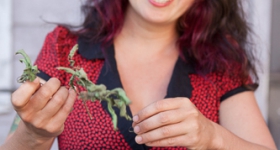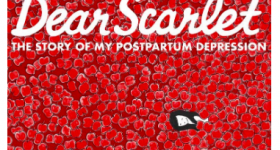Anyone can be
a bone marrow donor, but when it comes to finding a match, race can be
everything. There are certain genetic markers that doctors will look for when
searching for a match -- and if a match is made, a transplant can then be
scheduled. If someone is in need of a transplant, the process can be daunting,
especially if there is only a small pool of donors that share a similar ethnicity.
There are
many bone marrow donor services throughout the country, but the Asian American
Donor Program (AADP) is a champion nonprofit “dedicated to increasing
the availability of potential stem cells donors for patients with life
threatening diseases curable by a stem cell transplant.” Based in Alameda, CA,
AADP holds donor registration drives and outreach events to Asian, Pacific
Islander, and mixed race communities in the Bay Area.
Stem cells are found inside bone marrow, and those cells can turn into red blood
cells, white blood cells and platelets. AADP explains that “red blood cells carry oxygen throughout the body; white blood
cells help fight infections; and platelets help control bleeding.” Diseases like
leukemia, sickle cell anemia, blood cancers, and many other immune diseases can be treated with a bone
marrow or stem cell transplant. This “soft
tissue” is incredibly important to our health.
To learn more
about why bone marrow donation is important, and why it is particularly
important in Asian Pacific American and mixed race communities, I reached out
to Ruby Law, AADP's Recruitment Director.
Hyphen: When does one need a bone marrow donation, and what does
it do?
Ruby Law: Disease
can affect the marrow’s ability to function. When this happens, a bone marrow
or cord blood transplant could be the best treatment option. For some diseases,
transplant offers the only potential cure.
A bone marrow or cord blood transplant replaces unhealthy blood-forming
cells with healthy ones. Blood-forming cells are also called blood stem cells.
Blood stem cells are immature cells that can grow into red blood cells, white
blood cells and platelets. Every year,
12,000 patients with blood diseases such as leukemia and lymphoma, sickle cell
and other life-threatening diseases need a bone marrow or umbilical cord blood
transplant.
Hyphen: Why is bone marrow donation important for Asian Pacific
American and mixed-Asian Pacific Americans communities to address in
discussions about health?
RL: A patient
needs a matching donor for a successful transplant. The closer the match, the
better for the patient. Patients are
more likely to match someone from their own race or ethnicity. For example a Chinese patient will most
likely need a Chinese donor, while a Japanese patient will most likely need a
Japanese donor. Out of 10 million
registrants in the United States, only 7% of the registrants are Asian and only
4% are of mixed race. Most Asian or
Mixed Asian patients cannot find any matching donor in the registry because
there are not enough Asian, mixed Asian and minority donors.

Ruby Law, Asian American
Donor Program (AADP) Recruitment Director
Hyphen: Why is signing up for the registry important; what kind
of impact will signing up have on Asian Pacific American and mixed-Asian
Pacific American communities?
RL: Only 30% of
the time can a searching patient find a match from one of his or her siblings,
the rest of the time a patient depends upon the generosity of a complete
stranger. Some describe it as finding a
needle in a haystack. Seven-year-old
Baylor Fredrickson is of mixed Japanese and German descent. He’ll most likely need to find another Asian-Caucasian mixed race donor. His only
sister is not a match, and sadly none of the registrants around the world is a
match. AADP is helping the family to organize
“A Match for Bay” campaign to encourage more mixed race and minority to
register as marrow donors.
Hyphen: What happens once there is a match?
RL: A donor will
be notified to provide blood sample for confirmatory testing if he or she is a
potential match. If the blood test
determines a donor is a perfect match, they will perform another physical
examination. The donor will donate their
bone marrow or blood stem cells if he or she is the perfect candidate.
There are two
methods of donation: Peripheral Blood Stem Cells (PBSC) and bone marrow. The
patient’s doctor will choose which one is best for the patient.
PBSC
donation is a non-surgical procedure.
For five days leading up to donation, you will be given injections of filgrastim.
Filgrastim is a medication that increases the number of blood-forming cells in
your bloodstream. On the day of donation, blood is removed through a needle on
one arm and passed through a machine that separates out the blood-forming
cells. The remaining blood is returned to you through the other arm.
Bone marrow
donation is a surgical procedure that takes place in a hospital operating room.
Doctors use needles to withdraw liquid marrow from the back of your pelvic
bone. Donors receive anesthesia and feel no pain during the donation.
The time it
takes for a donor to recover varies. It depends on the person and type of
donation. Most donors are able to return to work, school and other activities
within one to seven days after donation. Be The Match Registry considers donor safety
a top priority and will follow up with you regularly until you are able to
resume normal activity.
Hyphen: Who can help, and how?
RL: We
are looking for donors who are between 18 to 44 years old and in good
health. People in this age group are
selected as a donor by physicians over 90% of the time. Medical research has shown that cells from
younger donors lead to better long-term survival for patients after
transplant. Potential donors will fill
out a form and provide a cheek swab sample.
Please attend one of our community donor drives at www.aadp.org/drive or request a home test kit at www.aadp.org/homekit.
***
Want more coverage of health issues affecting API communities? Donate to Hyphen's Health Issue crowdfunding campaign now!
Andrea Kim Taylor lives and works in Washington, D.C. She is a museum
educator and assistant editor for the Asian American Literary Review.









Comments